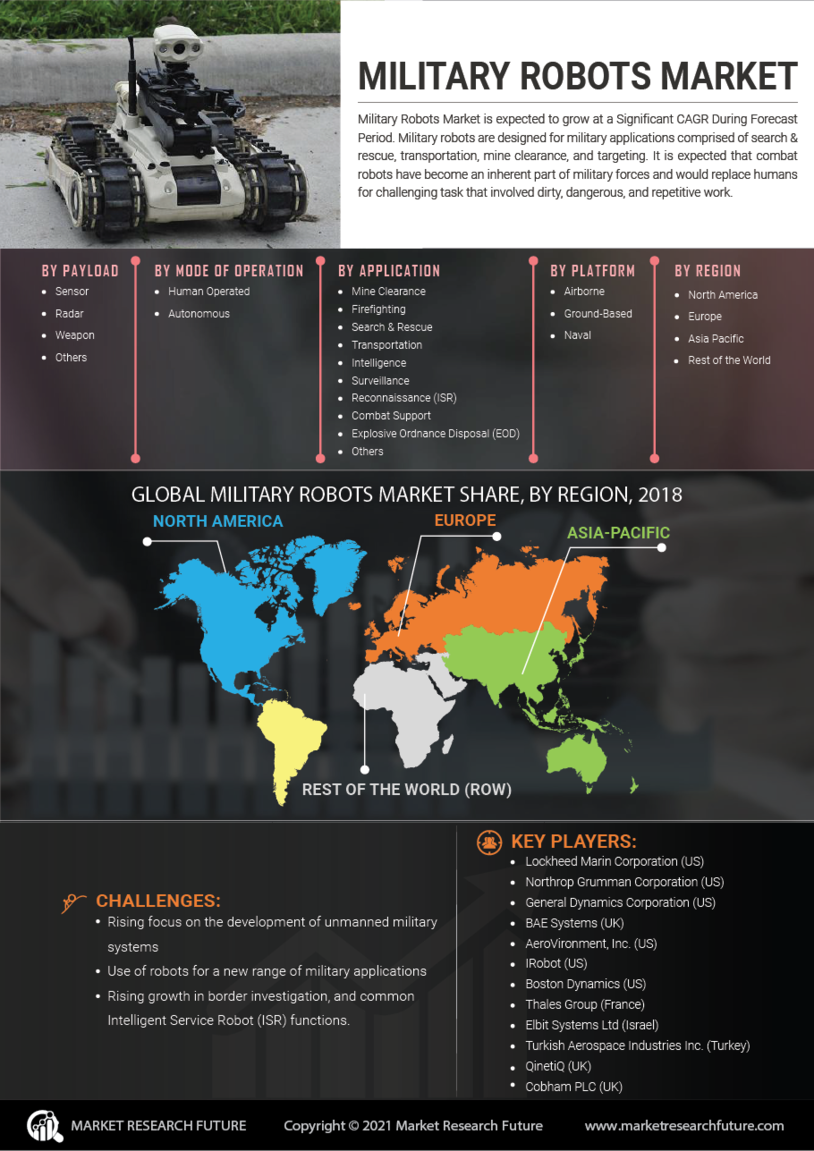The competitive landscape of the Military Robots Market is characterized by significant investments in technological advancements and strategic collaborations among key players. The market is driven by the increasing demand for unmanned systems across various military operations, such as reconnaissance, logistics, and combat support.
Companies are focusing on enhancing the capabilities of military robots to ensure improved efficiency, safety, and effectiveness in diverse operational scenarios. This competitive environment fosters innovation, leading to the development of advanced robotic systems equipped with sophisticated sensors, artificial intelligence, and automation technologies.
As nations continue to prioritize defense spending, the military robots market is expected to see robust growth, attracting diverse players aiming to establish a strong footprint. Textron is a notable player in the Military Robots Market, recognized for its innovative approach and diverse product portfolio.
The company leverages its extensive experience in manufacturing advanced tactical systems, including unmanned aerial vehicles and ground robots, to meet the specific demands of military applications globally.
Textron's strengths lie in its ability to integrate cutting-edge technology with operational requirements, thereby delivering reliable and effective robotic systems. The company's strong market presence is supported by strategic partnerships and a commitment to research and development, which allows it to stay ahead of emerging trends in military robotics.
This position not only enhances Textron's competitive advantage but also aligns with defense objectives focused on modernizing military capabilities. QinetiQ operates as a prominent entity within the Military Robots Market, showcasing a robust portfolio of products and services tailored for military applications.
The company is known for its innovative robotic solutions, including unmanned ground vehicles and software for autonomous systems, which have solidified its status in the arena. QinetiQ's strengths are amplified through its focus on technological advancement and its commitment to delivering high-quality, dependable systems.
The company's strategic mergers and acquisitions have further bolstered its capabilities, allowing for the seamless integration of expertise and resources to enhance its offerings in military robotics.
QinetiQ continues to expand its market presence by collaborating with defense agencies and organizations, ensuring it remains a key player in evolving defense technologies aimed at meeting the unique challenges faced by modern armed forces.


















Leave a Comment